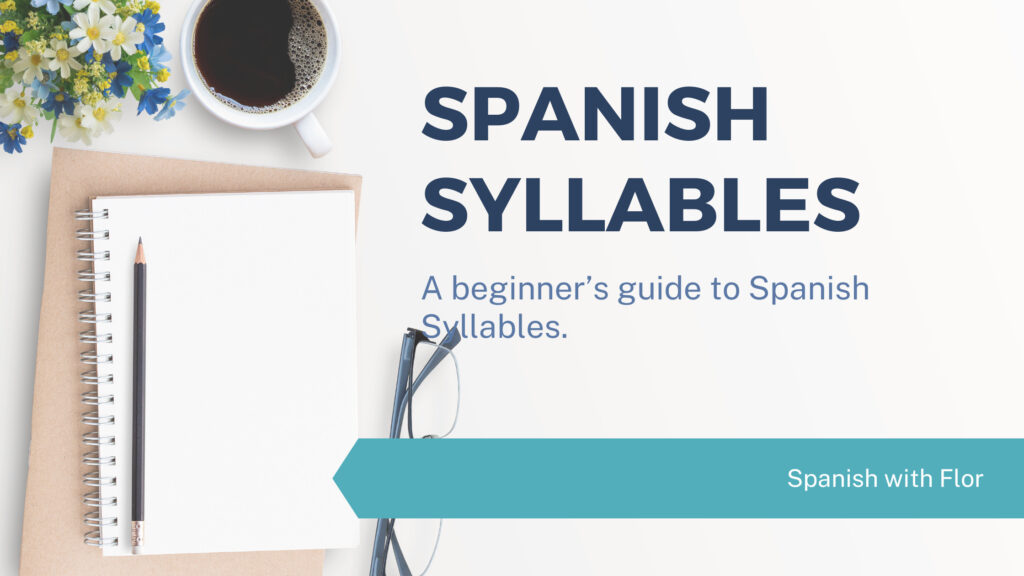When learning Spanish, understanding syllables is essential. In Spanish, words are divided into syllables based on the vowel sounds. Each syllable has one vowel sound and can have one or more consonants. There are some basic rules to follow when dividing Spanish words into syllables.
Knowing the basics of Spanish syllables is important for proper pronunciation and comprehension of the language. By understanding the rules for dividing words into syllables, you can improve your speaking and listening skills in Spanish.
Spanish Vowels
Spanish has five vowels: A, E, I, O, and U. Each vowel has a distinct sound, and it is important to know how to pronounce them correctly. The following table shows the pronunciation of each Spanish vowel:
| Vowel | Pronunciation |
| A | ah |
| E | eh |
| I | ee |
| O | oh |
| U | oo |
Spanish Consonants
Spanish has 22 consonant sounds, which can be divided into two categories: voiced and unvoiced. Voiced consonants are pronounced with vibration in the vocal cords, while unvoiced consonants are not.
The following table shows the pronunciation of each Spanish consonant:
| Consonant | Pronunciation |
| B | beh |
| C | seh or theh |
| D | deh |
| F | ef-eh |
| G | heh or gheh |
| H | ah-cheh |
| J | ho-tah |
| K | kah |
| L | eh-leh |
| M | eh-meh |
| N | eh-neh |
| Ñ | eh-nyeh |
| P | peh |
| Q | koo |
| R | eh-reh |
| S | eh-seh |
| T | teh |
| V | beh |
| W | doh-bleh beh |
| X | eh-kees |
| Y | ee-greh-gah |
| Z | seh-tah |
Syllable Division in Spanish
When learning Spanish, it is important to understand how to divide words into syllables. This can help with pronunciation, spelling, and even determining where to place accents. In Spanish, there are two types of syllables: open and closed.
Open Syllables
Open syllables are those that end in a vowel. The most basic syllables are open syllables that consist of a consonant followed by a vowel. Examples of open syllables include “niña” (ni-ña), “casa” (ca-sa), and “mamá” (ma-má).
Closed Syllables
Closed syllables end in a consonant. When a consonant is between two vowels, it forms a syllable with the second vowel. Examples of closed syllables include “ama” (a-ma), “oso” (o-so), and “oro” (o-ro).
Knowing how to divide words into syllables can be helpful when learning Spanish. It can assist with pronunciation and spelling, and can also help you determine where to place accents.
Stress in Spanish Syllables
When speaking Spanish, it is important to understand which syllables are stressed and which are not. Stressing the wrong syllable can lead to miscommunication and confusion.
In this section, we will discuss stressed and unstressed syllables in Spanish.
Stressed Syllables
In Spanish, the stress is usually on the second-to-last syllable of a word. However, there are some exceptions to this rule. If a word ends in a vowel, n, or s, the stress is on the second-to-last syllable. For example, the word “casa” (house) is pronounced “CA-sa” with the stress on the first syllable.
If a word ends in a consonant other than n or s, the stress is on the last syllable. For example, the word “feliz” (happy) is pronounced “fe-LIZ” with the stress on the last syllable.
There are also some words that have a written accent mark to indicate where the stress falls. For example, the word “árbol” (tree) has an accent mark on the first syllable to indicate that it is stressed.
Unstressed Syllables
In Spanish, unstressed syllables are pronounced quickly and with less emphasis than stressed syllables. Unstressed syllables can be important for maintaining the rhythm and flow of the language.
One important thing to note is that in Spanish, most syllables end in a vowel. When a consonant appears between two vowels, it forms a syllable with the second vowel. For example, the word “oso” (bear) is pronounced “o-so” with two syllables.
In addition, in Spanish hiatus is the sequence of two vowels pronounced in different syllables: grúa (grú – a), país (pa – ís), caer (ca – er), discutíais (dis – cu – tí – ais).
It is considered “hiato” (hiatus) the combinations of:
- unstressed open vowel (/a/, /e/, /o/) + stressed closed vowel (/i/, /u/): raíz, laúd, reír, transeúnte, oír
- stressed closed vowel + unstressed open vowel: María, ríe, frío, cacatúa, acentúe, búho
- two equal vowels: azahar, poseer, chiita, alcohol
- two different open vowels: caer, aorta, teatro, etéreo, coágulo, poeta
Practical Examples and Exercises
Common Spanish Words
To get started with Spanish syllables, it’s helpful to practice with common Spanish words. Here are a few examples:
| Word | Syllables |
| niña | ni-ña |
| casa | ca-sa |
| mamá | ma-má |
| ama | a-ma |
| oso | o-so |
| oro | o-ro |
| enloquecer | en-lo-que-cer |
Syllable Practice Exercises
Now, let’s practice syllables with some exercises.
- Divide the following words into syllables:
- perro
- gato
- mesa
- silla
- ventana
- Identify the number of syllables in the following words:
- abuela
- computadora
- jardín
- teléfono
- televisión
Create a list of five Spanish words and divide them into syllables.


